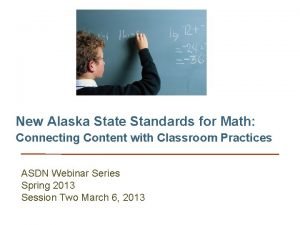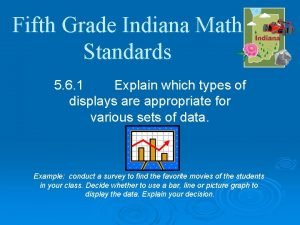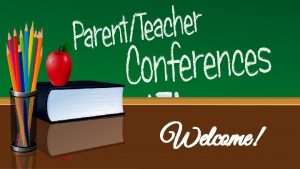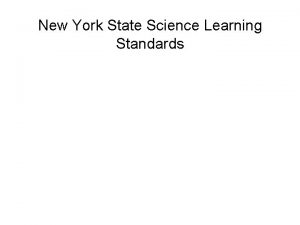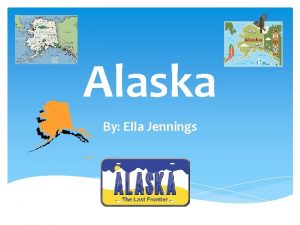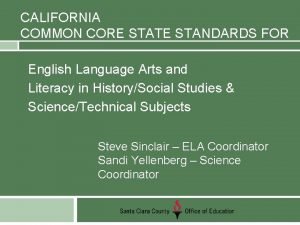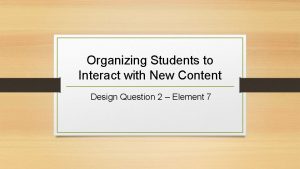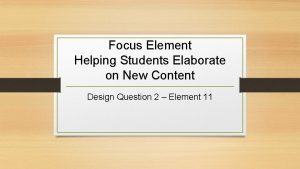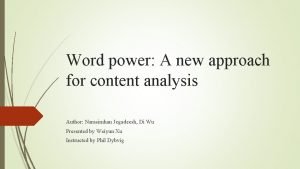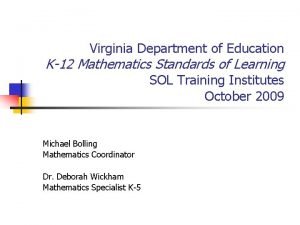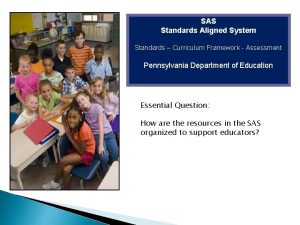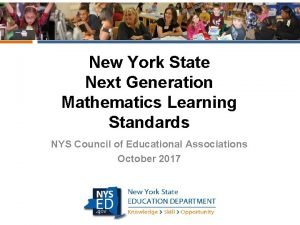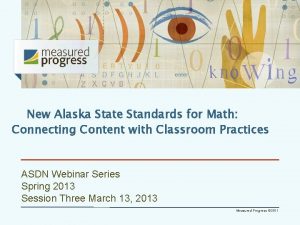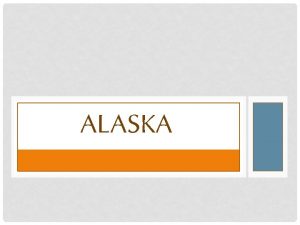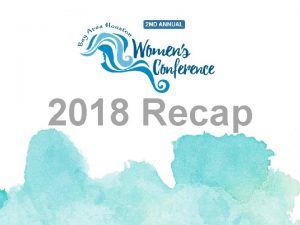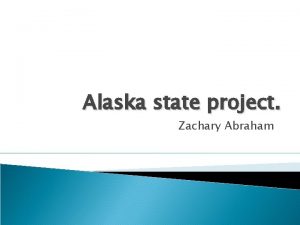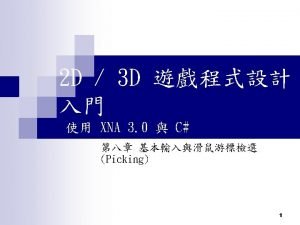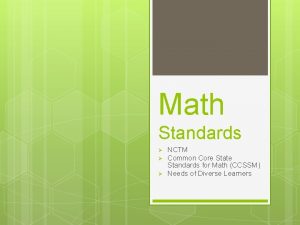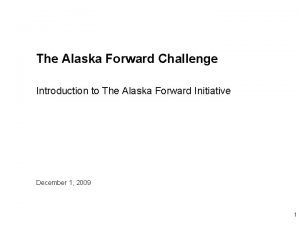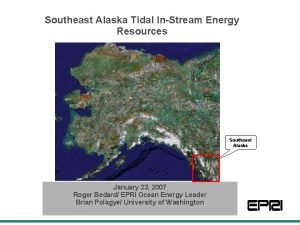New Alaska State Standards for Math Connecting Content






















- Slides: 22

New Alaska State Standards for Math: Connecting Content with Classroom Practices ASDN Webinar Series Spring 2013 Session Two March 6, 2013

While we are waiting to begin today, please share any video’s or resources you have located since our last webinar, in the chat box.

Today’s Targets §Continue to discuss the larger picture §Dig deeper into practices three and four: 3. Construct viable arguments and critique the reasoning of others 4. Model with mathematics §Identify key implications for classroom instruction.

Connections, Focus, and Coherence “An important set of connections is found between the content standards and the practice standards. These connections are absolutely essential to support the development of students’ broader mathematical understanding. The standards emphasize that mathematics is not a checklist of fragments to be mastered, but that doing and using mathematics involves connecting content and practices. Focus is critical to ensure that students learn the most important content completely, rather than succumb to an overly broad survey of content. Coherence is critical to ensure that students see mathematics as a logically progressing discipline, which has intricate connections among its various domains and requires sustained practice through application in order to master. ” PARCC Model Content Frameworks (2011) 2/24/2021

Thoughts? What is the first word that comes to mind when you read this paragraph taken from the PARCC Frameworks?

The Eight Mathematical Practices 1. Make sense of problems and persevere in solving them. 2. Reason abstractly and quantitatively. 3. Construct viable arguments and critique the reasoning of others. 4. Model with mathematics. 5. Use appropriate tools strategically. 6. Attend to precision. 7. Look for and make use of structure. 8. Look for and express regularity in repeated reasoning.

Poll/Survey of the Eight Practices- So Far Looking over all eight practices, which practice do you have the most questions about, including the two we covered last week? Choose one practice- 1 through 8 Measured Progress © 2012

Practice Number Three Teachers who are developing students’ capacity to "construct viable arguments and critique the reasoning of others" require their students to engage in active mathematical discourse. This typically involves having students explain and discuss their thinking processes aloud. A teacher of 8 to 14 year olds might post multiple approaches to a problem and ask students to identify plausible rationales for each approach as well as any mistakes made by the mathematician.

Questions, Questions If you have already watched the video, and you are unable to view it during the webinar, please post a question or comment in the chat box. After we have all seen the video, we will respond to your questions or comments. Measured Progress © 2012

Construct Viable Arguments Where to Begin? My Favorite No!

Grade 4 Maddie: There’s no 56 as a choice. Seth: Maybe you should check your sides. Maddie: Oh yeah, it’s got to be 5 x 4 for that part because it’s shorter there.

Construct Viable Arguments Possible Next Step- Think, Pair, Share

Poll- How about your students? How often do you and your students verbally justify their strategies for solving math problems? This includes the reasoning behind both correct and incorrect answers. a. b. c. d. 3 -4 times a week 1 -2 times a month I am not sure what this would look like in my classroom.

IF…. “If you want anything to change in classrooms, then the problems have to look different. We can’t expect teachers to teach kids to think critically, and be ready for the world if we just continue to give them a bunch of multiple choice questions. Don’t fall down on the job here. ” NJ Principal at a CCSS Training Summer 2012 Measured Progress © 2012

Practice Four Why does the previous quote matter when it comes to Modeling with Mathematics? How would you measure this math standard with a multiple choice question? New Alaska Standard: 6. G. 1 Solve real-world and mathematical problems involving area, surface area, and volume. Find area of right triangles, other triangles, special quadrilaterals, and polygons by using manipulatives to compose into rectangles or decompose into triangles and other shapes; apply these techniques in the context of solving real-world and mathematical problems.

Examples for Practice Four Teachers who are developing students’ capacity to "model with mathematics" move explicitly between real-world scenarios and mathematical representations of those scenarios. A middle childhood teacher might pose a scenario of candy boxes containing multiple flavors to help students identify proportions and ratios of flavors and ingredients. For middle school students, a teacher might use a function table to illustrate the cost of creating bracelets.

What would the conversation sound like?

What Feedback Would You Give? If this was a student you were working with, how would you move their learning forward and close the gap in their understanding?

Subsistence Fishing on the Kenai River Jenna and her dad went to subsistence fish for sockeye salmon at the mouth of the Kenai River. § In two hours, Jenna and her dad netted 32 sockeye. What was the average number of fish caught in each drift if it took 20 minutes to drift down and 5 minutes to power back up the river? § When Jenna and her dad went back to the dock, the Department of Fish and Game protection officer was surveying boats to get an estimate of the number of fish caught. Jenna told her that they caught 32, another boat tied up and counted 45 fish, and a third boat tied up and had 27. What was the average number of fish caught by all three boats? Measured Progress © 2012

What indicator in practices three and four do you feel confident about in your own classroom? What indicator would you like to enhance in your own classroom?

This week’s 15 minute trade- browse through some reading related to the new math standards. Check out the PARCC document referenced earlier- it’s on our Resources Page on the ASDN website.

Be well, Do good work and keep in touch.
 Alaska state standards math
Alaska state standards math Indiana 3rd grade math standards
Indiana 3rd grade math standards Oklahoma 3rd grade math standards
Oklahoma 3rd grade math standards New york state standards science
New york state standards science Alaska easternmost state
Alaska easternmost state State of alaska retirement
State of alaska retirement Alaska state mineral
Alaska state mineral Acpe student loan
Acpe student loan Alaska state hospital and nursing home association
Alaska state hospital and nursing home association State of alaska division of retirement and benefits
State of alaska division of retirement and benefits Carrier content and real content in esp
Carrier content and real content in esp Static content vs dynamic content
Static content vs dynamic content California content standards english
California content standards english California state standards english
California state standards english Colorado model content standards
Colorado model content standards Hard standards and soft standards examples
Hard standards and soft standards examples Organizing students to interact with content
Organizing students to interact with content Using questions to help students elaborate on content
Using questions to help students elaborate on content Helping students elaborate on new content
Helping students elaborate on new content Word power: a new approach for content analysis
Word power: a new approach for content analysis Sol virginia
Sol virginia Sas standards math
Sas standards math Next generation learning standards nys
Next generation learning standards nys
